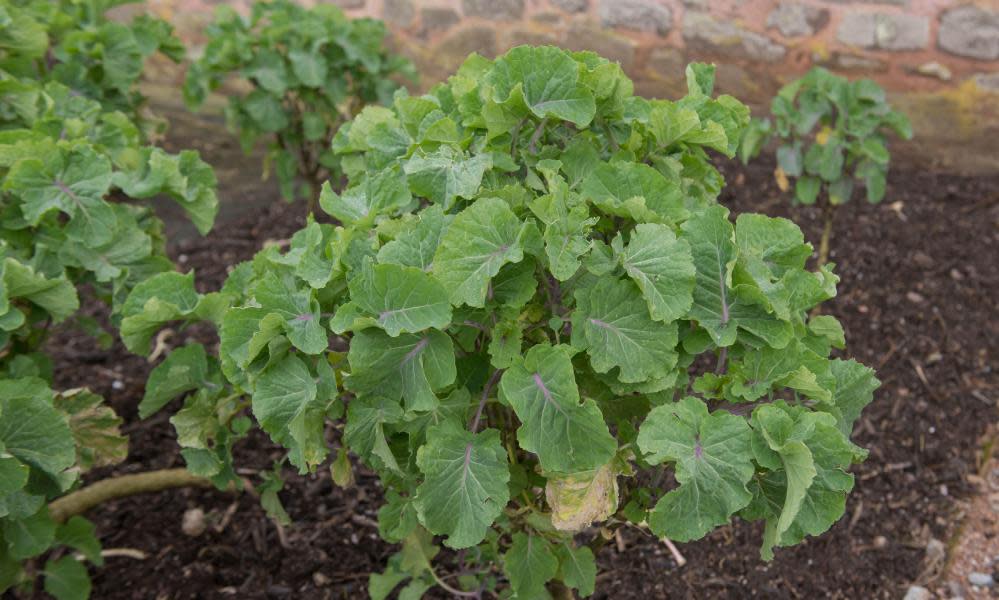How to grow heritage kale

There it hung, on a rocky cliff face that was slowly crumbling into the fine shale of the grey beach below. Despite the exposed site and bare minimum of soil, this wild cabbage was thriving, resplendent even with its dusky purple midribs and thick, leathery leaves.
It is always thrilling to meet the ancestors of our common foods and the wild cabbage, Brassica oleracea, is just that. It is the original form that gave rise to the cabbage, the cauliflower, brussels sprout, broccoli, kohlrabi and the one it most resembles, kale. It is perennial and can be found on cliffs and coasts all round the British Isles, from Kent to Caithness, Antrim to Anglesey.
The wild cabbage probably first arose in Spain, but has been here such a long time it is considered part of our flora. It was certainly loosely cultivated from the offset and is usually described in early flora publications as being found near villages and towns, which is still true today. It is a fine edible crop, the young leaves being tenderest.
Still, I’m not suggesting you should go picking: it is not rare, but could be easily overharvested. Moreover, if you do come across it, take note of how far these genes have come. The wild cabbage is a tenacious plant that seems so far from, say, the brussels sprout, which needs to be fawned over lest it gets upset and blows its sprouts open.
Rather than harvest the wild one, I suggest growing a very close relative. There are a number of perennial kales often known as cottagers kale: Daubenton kale, Taunton Deane kale, or sometimes just perennial kale. These are old heritage varieties that were once widely cultivated but fell by the wayside, in part because they don’t travel well after picking.

I would not garden without them. They require no attention, other than to harvest them frequently to stop them growing too large. Pigeons can be a problem, but if you nestle it between perennial flowers and not too near anything a pigeon could perch on – a fence or stake, say – in my experience they will be left alone. They are unfussy with soil requirements; mine are very happy on clay, but they do equally well on poor, free-draining soil. I never cover them with netting, and only occasionally have to pick off cabbage white caterpillars.
Related: How to control aphids in your garden | Alys Fowler
For all of this, you get year-round leaves for the rest of your life – as long as you take cuttings (they rarely set seed, so have to be propagated this way); the plant will get a bit tired after nine years and needs to be rejuvenated. If I could give every gardener a cutting of this plant, I would.


